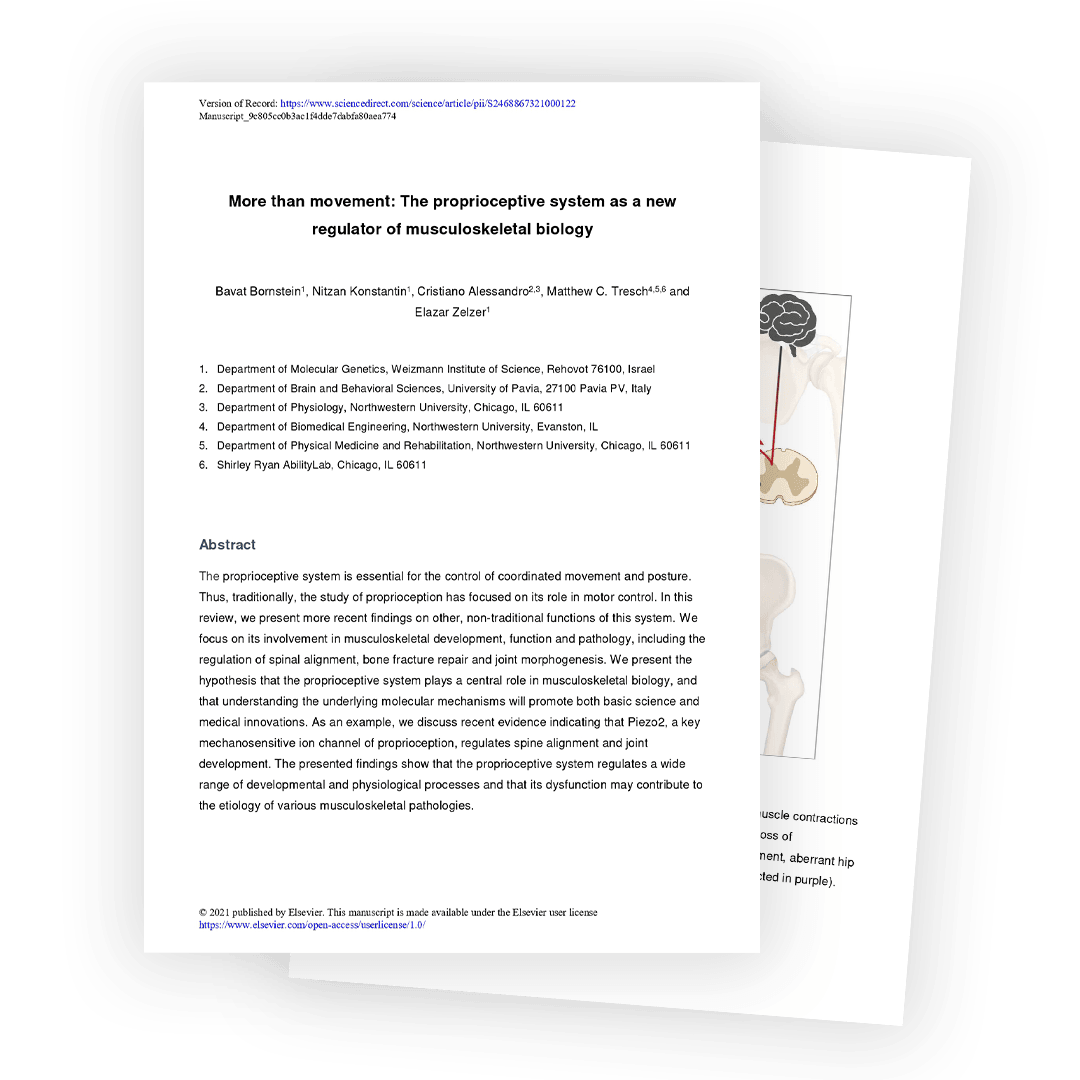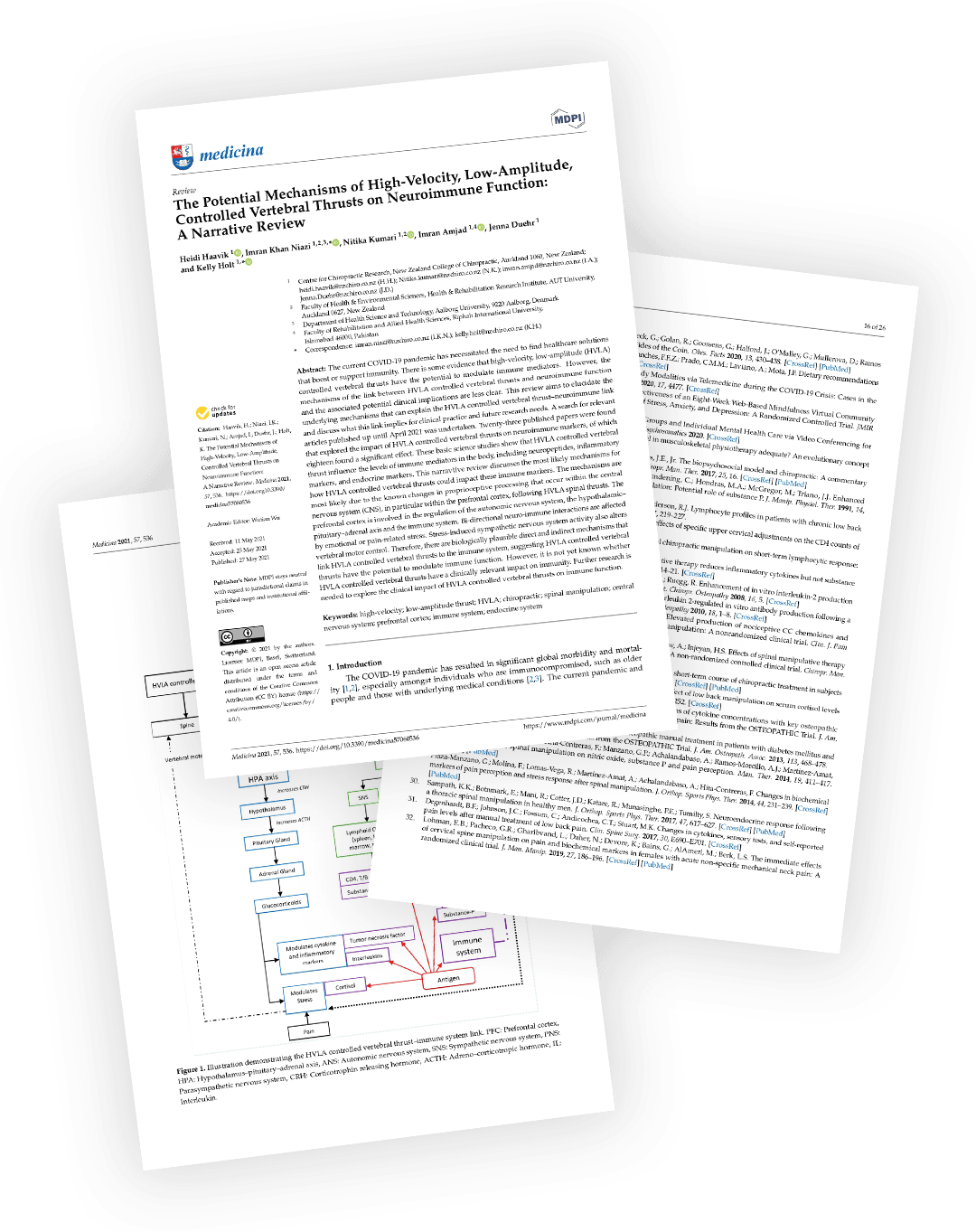
- LEARN cutting edge research that will allow you confidence and certainty in practice.
- COMMUNICATE the benefits of chiropractic to your patients and community.
- ESTABLISH yourself as a health authority.
CUSTOM JAVASCRIPT / HTML
YOU CAN’T AFFORD TO MISS THIS ONE!
Translating Research into
Practice for Chiropractors
- LEARN cutting edge research that will allow you confidence and certainty in practice.
- COMMUNICATE the benefits of chiropractic to your patients and community.
- ESTABLISH yourself as a health authority.
CUSTOM JAVASCRIPT / HTML
YOU CAN’T AFFORD TO MISS THIS ONE!
Bringing Chiropractic Research Papers to Life
In this amazing educational webinar Dr. Heidi Haavik, Dr Alice Cade and Dr Tanja Glucina discuss their groundbreaking chiropractic research and bring it to life in meaningful ways for practitioners to understand and effectively apply in practice.
In an entertaining, educational and conversational format, learn about the chiropractic research that will offer you confidence and certainty.
Research Papers Presented and Discussed:
1. Reliability Paper
Research now evidences that chiropractors can reliably analyse and detect subluxation with interexaminer reliability accessed through "median absolute examiner difference in vertebral equivalence," emphasising that different examiners are able to identify the presence of subluxation, dispelling the myth that we randomly manipulate the spine and can analyse, detect and adjust vertebral subluxation with confidence, safety and credibility.
Your ability to communicate confidence and certainty to the patients and provides credibility to the chiropractic profession.
Learn the science behind the significant aspect of the chiropractic profession, in this entertaining and easy to understand presentation.

2. Contemporary Model of Body Subluxation
Researchers are now evidencing high velocity low amplitude (HVLA) adjustment on neuromuscular function. In fact, research identifies the distinctions between a manipulation and adjustment, and the differences that occur neurophysiologically as a result.
This insightful presentation by the team explain how spinal dysfunction (subluxation) explains the neurophysiological impacts that see and how a high velocity low amplitude adjustment (thrust) influences the brain and coordinates muscle function. In essence, we're going to uncover the science of how the brain creates a coherent picture of its environment through its nervous system and is modulated by spinal function.
One of the interesting conversations that come from this research is the role that chiropractic has on the nervous system and through its nervous system impact could potentially be altering the visual, auditory, emotional and sensory systems of the body.
Now we have a plausible scientific mechanism by which changes that we see in practice happen as a result of analysing, locating and adjusting subluxation.
The research demonstrates how the brain controls neuromuscular function and reduces the protective mechanisms of the nervous system to improve the accuracy of our perception and the potential experience of life.
3. Proprioceptive Systems
This important article emphasises how proprioception allows us to create a sensible picture of where are body is in space and how we can adapt to our environment. Most importantly, it shows that the nervous system integrity is to regulate muscular skeletal biology and that muscle contraption is needed for skeletal development. The Nobel prize in physiology that this research is based upon highlights the regulation of proprioception has the ability to interfere skeletal development. This has incredible implications for chiropractic, emphasising subluxation interferes with proprioception, it has the potential to interfere with skeletal development and may be associated with the presentation of conditions such as scoliosis, hip dysplasia, uncoordinated movement and interrupted healing, just to name a few.
The implication to chiropractic is profound—we may have the ability to influence, not only from spinal alignment with an adjustment—but neuromuscular skeletal development and to minimise presentation of distortion in these developmental patterns such as change in the trajectory of scoliosis, hip dysplasia and more.
4. Neuroimmune Function
In a literary review in chiropractic immunity, the team discuss what the research says and what we can say as chiropractors, including look at the basic science studies that exist and the absence in clinical science. We have a very clear mechanism of how the immune system is affected by the nervous system, including the role of the AMS on immunity, the HPA AXIS, the PHC and increase in perception through feedback on the vagal nerve providing nervous system interpretation through introspection and exteroception for greater adaptability, including the role the adjustment has on chemicals such as Substance P, oxytocin and interleukin.
Finally, we will discuss what you can say about chiropractic and the immune system and what you can't say!
Bringing Chiropractic Research Paper to Life
In this amazing educational webinar Dr. Heidi Haavik, Dr Alice and Dr Tanja discuss their groundbreaking chiropractic research and bring it to life in meaningful ways for practitioners to understand and effectively apply in practice.
In an entertaining, educational and conversational format, learn about the chiropractic research that will offer you confidence and certainty.
About the Following 4 Research Papers:
1. Reliability Paper:
3. Proprioceptive Systems
This important article emphasises how proprioception allows us to create a sensible picture of where are body is in space and how we can adapt to our environment. Most importantly, it shows that the nervous system integrity is to regulate muscular skeletal biology and that muscle contraption is needed for skeletal development. The Nobel prize in physiology that this research is based upon highlights the regulation of proprioception has the ability to interfere skeletal development. This has incredible implications for chiropractic, emphasising subluxation interferes with proprioception, it has the potential to interfere with skeletal development and may be associated with the presentation of conditions such as scoliosis, hip dysplasia, uncoordinated movement and interrupted healing, just to name a few.
The implication to chiropractic is profound—we may have the ability to influence, not only from spinal alignment with an adjustment—but neuromuscular skeletal development and to minimise presentation of distortion in these developmental patterns such as change in the trajectory of scoliosis, hip dysplasia and etc.
4. Neuroimmune Function
Our Speakers

Dr Heidi Haavik

Dr Alice Cade

Dr Tanja Glucina
This information is the foundational knowledge necessary for chiropractors to not only understand chiropractic neuroscience, but to understand the role that chiropractic has in influencing nervous system function in the expression of a person's health and quality of life.

This information is the foundational knowledge necessary for chiropractors to not only understand chiropractic neuroscience, but to understand the role that chiropractic has in influencing nervous system function in the expression of person's health and quality of life.
SPONSORS




© 2023 New Zealand College of Chiropractic • All Rights Reserved

